CWGC – History Information
From October 1914 to October 1918, five major offensives occurred at Ypres (now Ieper) in Belgium. By the time the last shells fell in Ypres in October 1918, nearly 200,000 Commonwealth servicemen had been killed.
The Menin Gate is one of four memorials to the missing in Belgian Flanders which cover the area known as the Ypres Salient. Broadly speaking, the Salient stretched from Langemarck in the north to the northern edge in Ploegsteert Wood in the south, but it varied in area and shape throughout the war.
The Salient was formed during the First Battle of Ypres in October and November 1914, when a small British Expeditionary Force succeeded in securing the town before the onset of winter, pushing the German forces back to the Passchendaele Ridge. The Second Battle of Ypres began in April 1915 when the Germans released poison gas into the Allied lines north of Ypres. This was the first time gas had been used by either side and the violence of the attack forced an Allied withdrawal and a shortening of the line of defence. There was little more significant activity on this front until 1917, when in the Third Battle of Ypres an offensive was mounted by Commonwealth forces to divert German attention from a weakened French front further south. The initial attempt in June to dislodge the Germans from the Messines Ridge was a complete success, but the main assault north-eastward, which began at the end of July, quickly became a dogged struggle against determined opposition and the rapidly deteriorating weather. The campaign finally came to a close in November with the capture of Passchendaele. The German offensive of March 1918 met with some initial success, but was eventually checked and repulsed in a combined effort by the Allies in September.
Having seen some of the heaviest fighting in the First World War, Ypres was in ruins. The Town Major of Ypres Henry Beckles Willson described it as ‘holy ground’ and felt the area should not be rebuilt but remain a memorial. However, this was not to be and the town was rebuilt.
The battles of the Ypres Salient claimed many lives on both sides and it quickly became clear that the commemoration of members of the Commonwealth forces with no known grave would have to be divided between several different sites. The site of the Menin Gate was chosen because of the hundreds of thousands of men who passed through it on their way to the battlefields. It commemorates casualties from the forces of Australia, Canada, India, South Africa and United Kingdom who died in the Salient. In the case of United Kingdom casualties, only those prior 16 August 1917 (with some exceptions). United Kingdom and New Zealand servicemen who died after that date are named on the memorial at Tyne Cot, a site which marks the furthest point reached by Commonwealth forces in Belgium until nearly the end of the war. New Zealand casualties that died prior to 16 August 1917 are commemorated on memorials at Buttes New British Cemetery and Messines Ridge British Cemetery.
Building of the memorial began in 1923 and on 24 July 1927, it was unveiled by Field Marshal Lord Plumer. Veterans, relatives of those commemorated and local people attended. Dignitaries included King Albert I of Belgium and Marshal Ferdinand Foch, Commander of French forces during the war. The ceremony was also broadcast on the wireless in Britain. Soon after its completion the memorial became a place of pilgrimage for veterans, relatives and visitors to the battlefields. During the Second World War, the memorial incurred considerable damage including shrapnel holes on almost all its elevations. The memorial was restored between 1945 and 1948 under the supervision of Reginald Blomfield’s son, Austin Blomfield. Some of the damage can still be seen today as honourable battle scars.
Every evening since 1928, at 8pm buglers sound the Last Post. The ceremony has become part of the daily life of Ieper and traffic is stopped from passing through the memorial. Only during the German occupation of the Second World War was the ceremony interrupted. At that time it was held at Brookwood Military Cemetery in Surrey, England.
The idea of performing the Last Post was first conceived by the Belgian Pierre Vandenbraambussche, Superintendent of the Ieper Police. The Last Post Committee (now Association) was formed in 1928 of local volunteers and has remained ever since.
Source © Commonwealth War Graves Commission – Menin Gate Memorial
Local men buried in this cemetery
Arthur Edwin Clarke – Bourne Memorial
Arthur Palmer Hill – Dowsby Memorial and Rippingale Memorial
Arthur Holland – Edenham Memorial
Cornelius Taylor – Dowsby Memorial
Edward James Backlog – Bourne Memorial
Ellis Parker – Bourne Memorial
Ernest Norman Badger – Langtoft Memorial
George Hallam – Baston Memorial
George Henry Hare – Dunsby Memorial
John Albert Victor Bosley – Bourne Memorial
John Joseph Smith – Bourne Memorial
Leslie Grosvenor Hodgkinson – Billingborough Memorial
Thomas Atkinson Wakefield – Haconby Memorial
Thomas Charles Pickering – Aslackby Memorial
Thomas Willie Watson – Bourne Memorial
William Arthur Oakden – Bourne Memorial
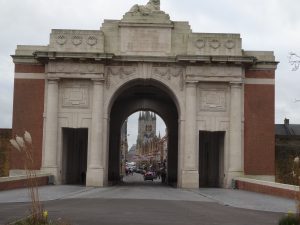


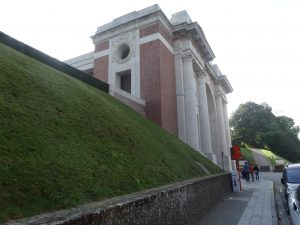

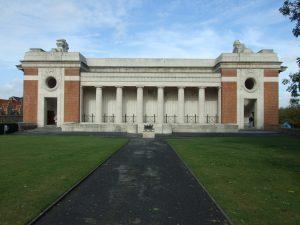



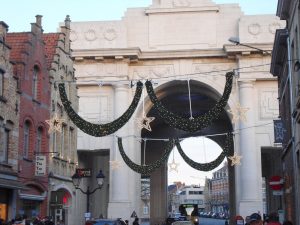
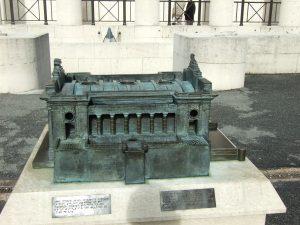
Photographs © South Lincolnshire War Memorials – 2009, 2011, 2014 & 2017